This Religion Called Christianity 3
Mike Ervin
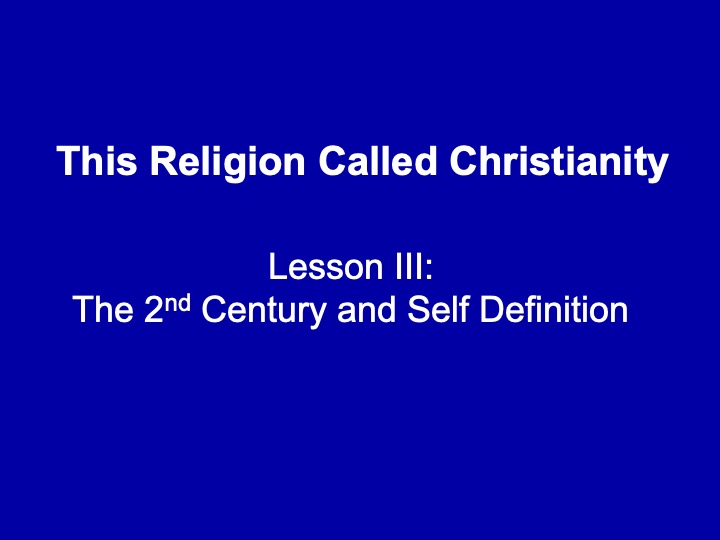
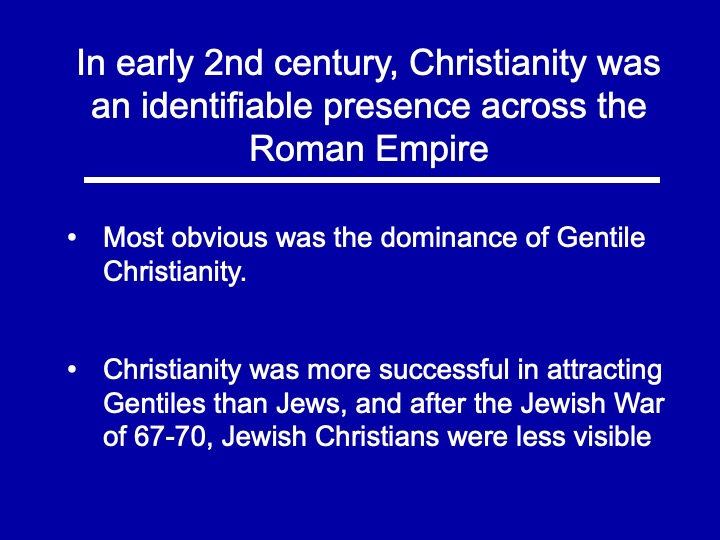
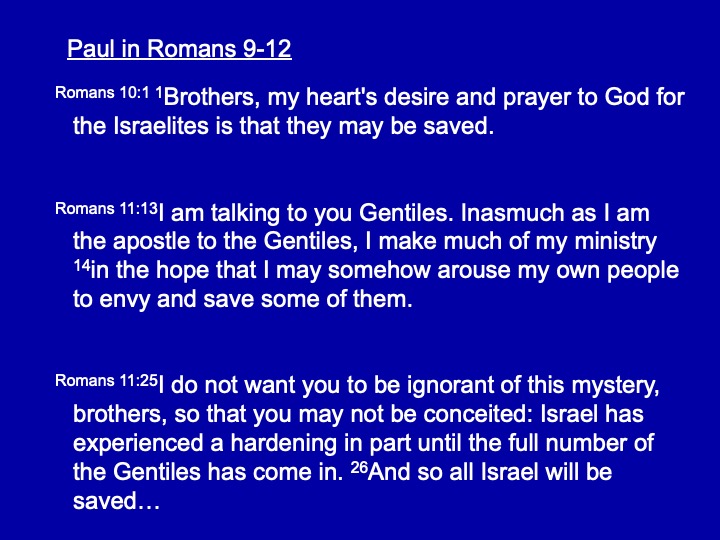
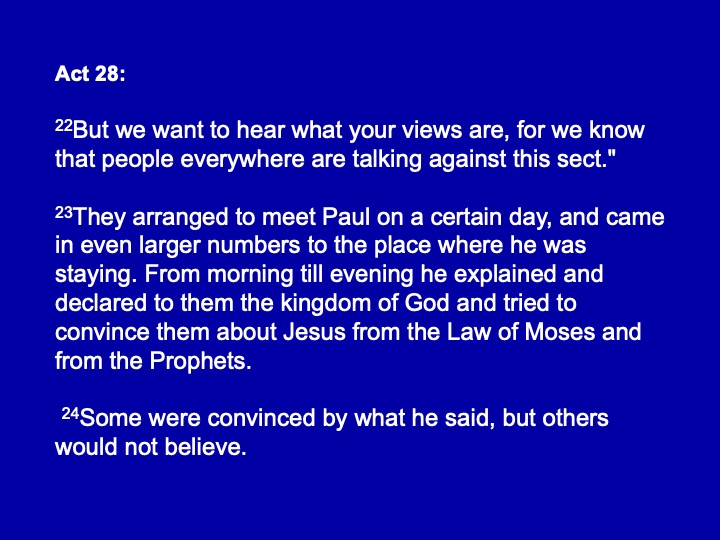
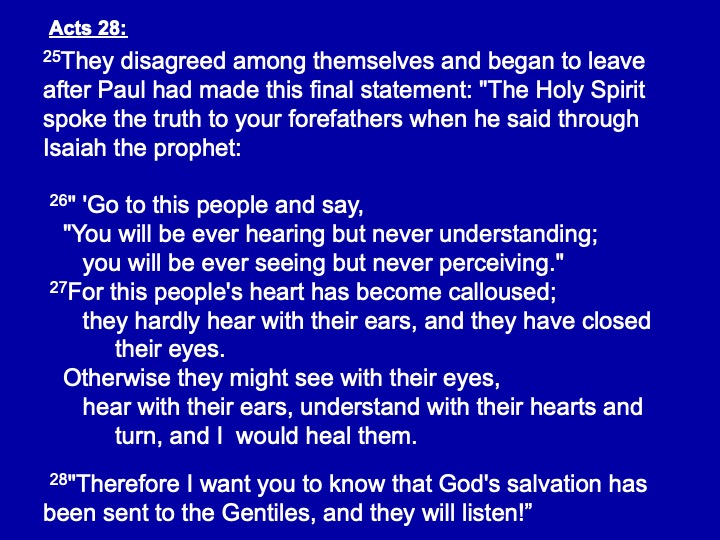
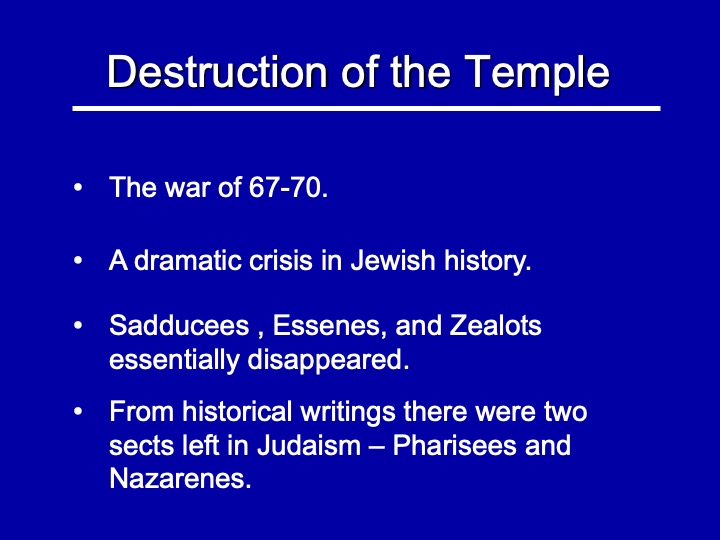
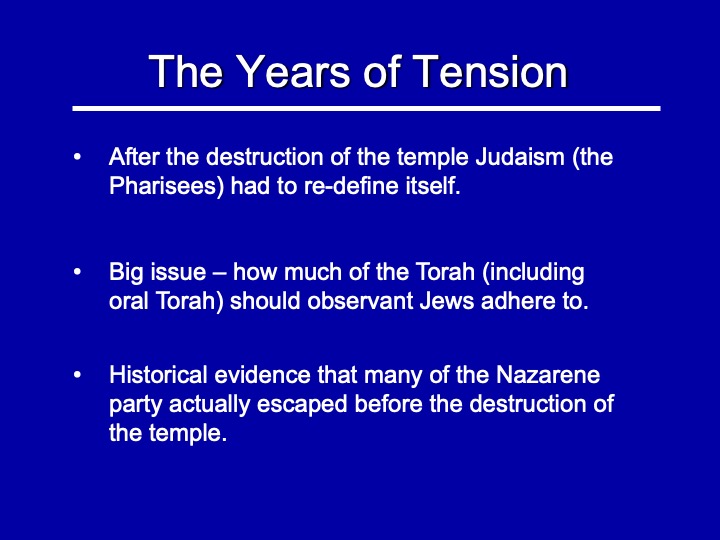
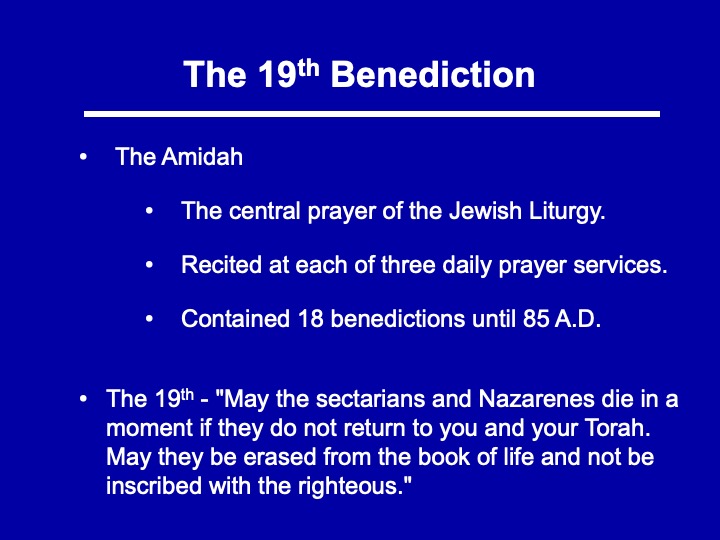
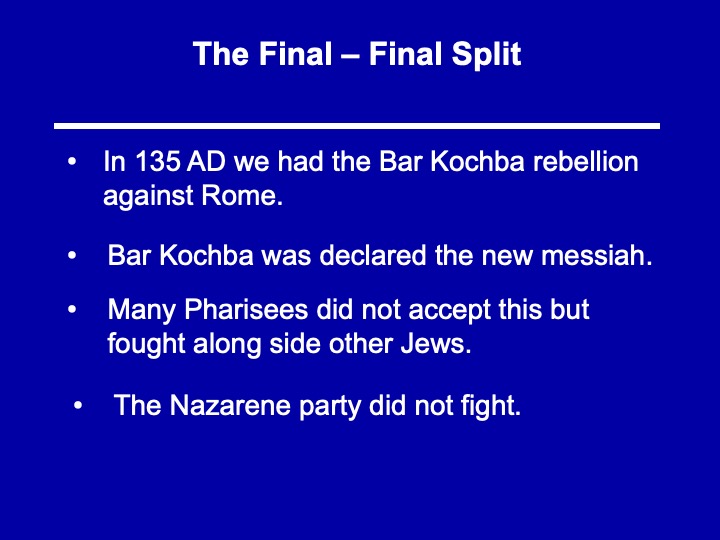
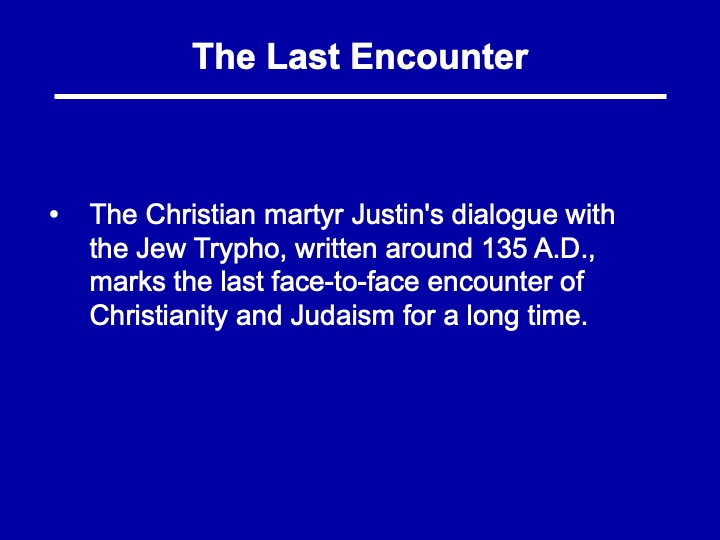
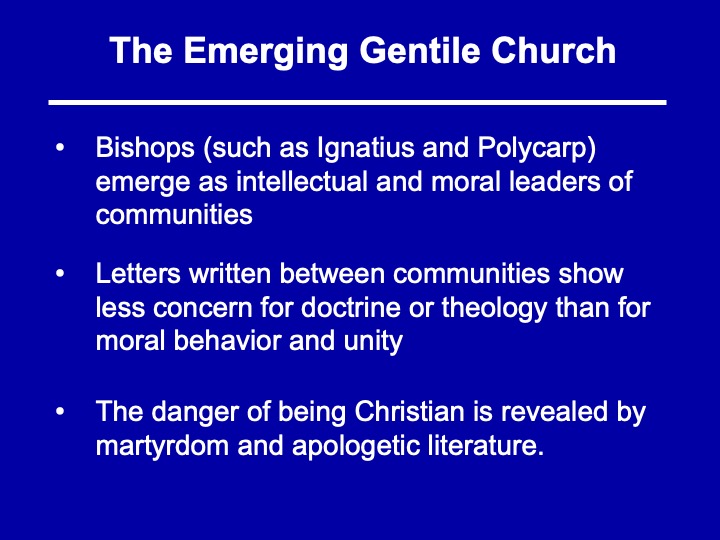
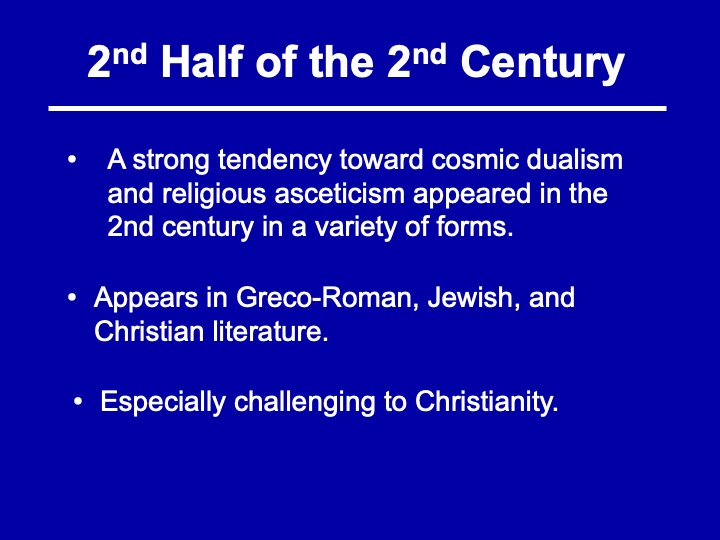
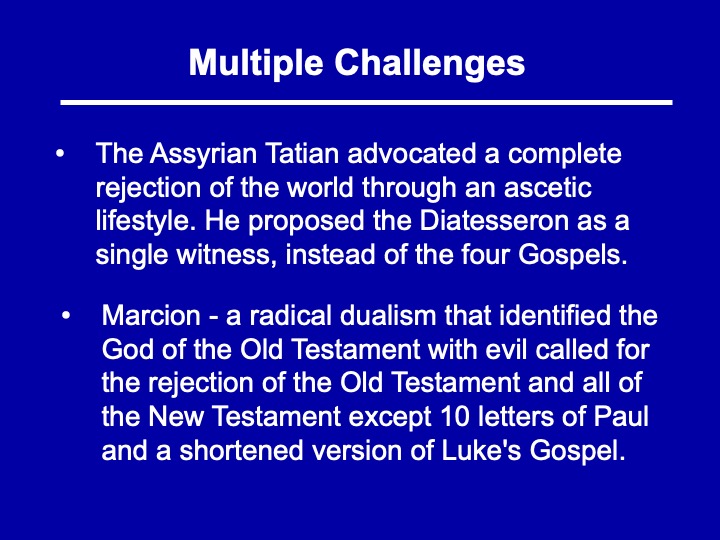
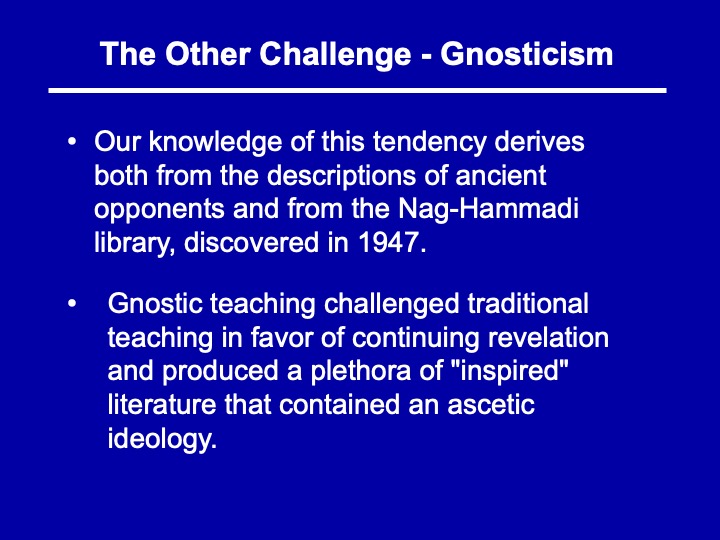
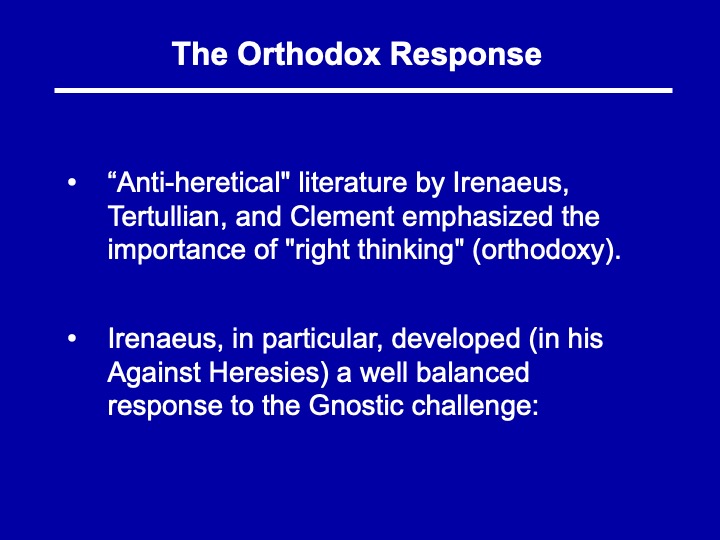
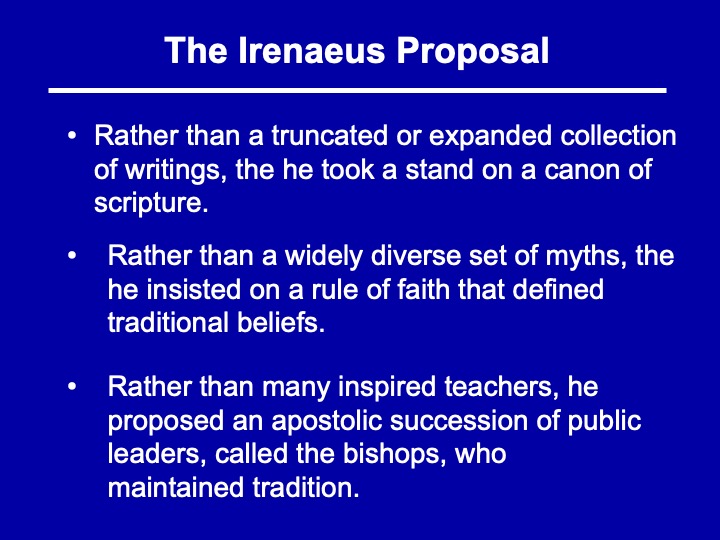


This Religion Called Christianity 3
Links
< Home Page > < This Religion Called Christianity >
Lesson Three - This Religion Called Christianity - the Text
Second Century and Self-Definition
Scope: Christianity most decisively defines itself in the middle and late 2nd century. This lecture traces the story from the state of the small and persecuted communities at the beginning of the 2nd century to the emergence of a well-organized and well-defined church at the start of the 3rd century. The turning point is the challenge posed by dramatically different understandings of the basic Christian message. On one side, Marcion and Tatian called for a contraction of the Christian literature to reflect their ascetical understanding. On the other side, various Gnostic movements argued for an expanded-though equally dualistic-understanding of Christ and Christian discipleship. The orthodox response to these challenges (especially by Tertullian and Irenaeus) set the pattern for Christian self-definition and prepared for the long Constantinian era that lasted from the 4th century until the recent past.
I. In the beginning of the 2nd century, Christianity was an identifiable presence across the Roman Empire whose development was natural and organic but also bore the marks of its first creative expansion.
A. The most obvious feature was the dominance of Gentile Christianity and of Greco- Roman culture.
1. Christianity was more successful in attracting Gentiles than Jews, and after the Jewish War of 67-70, Jewish Christians were less visible.
2. Sociologically and symbolically, Christian churches resembled Greco-Roman schools more than Jewish synagogues.
3. As communities began to exchange and collect their writings, the question of how Christianity did or did not connect to Judaism was inevitable.
4. The Christian martyr Justin's dialogue with the Jew Trypho, written around 135 A.D., marks the last face-to-face encounter of Christianity and Judaism for a long time.
B. The sparse literature of the early 2nd century reveals a movement that was diverse and sometimes divided, concerned for moral teaching and practice, and eager to offer a defense against attackers.
1. Bishops (such as Ignatius and Polycarp) emerge as intellectual and moral leaders of communities, but the voice of prophecy was still alive (Sheppard of Hermes).
2. Letters written between communities show less concern for doctrine or theology than for moral behavior and unity (see 1 Clement).
3. The danger of being Christian is revealed by martyrdom (see Ignatius and Polycarp) and apologetic 1 iterature (Diognetus, Justin).
This Religion Called Christianity
II. The second half of the 211(1 century generated forms of diversity that challenged the Christian movement in fundamental ways and demanded a more explicit form of self-definition.
A. A strong tendency toward cosmic dualism and religious asceticism appeared in the 2nd century in a variety of forms.
1. It is not entirely an internal Christian phenomenon, although its effects on Christianity are impressive.
2. It is not entirely "heterodox" in character, being found as well in popular Christian writings that do not challenge common convictions (see Infancy Gospel of James, Acts of Paul).
3. The blanket tenn Gnosticism covers a wide range of Christian ascetical and dual istic tendencies that powerfully challenge the nature of the religious movement.
B. One form of the challenge moved in the direction of contracting traditional texts and tenets.
1. The Assyrian apologist Tatian advocated a complete rejection of the world through an ascetic lifestyle. He proposed the Diatesseron as a single witness, instead of the four Gospels.
2. Marcion of Sinope proposed a radical dualism that identified the God of the Old Testament with evil and, in his Antitheses, called for the rejection of the Old Testament and all of the New Testament except 10 letters of Paul and a shortened version of Luke's Gospel.
C. Another strongly ascetical tendency moved in the direction of expanding the courses of authority.
1. Our knowledge of this tendency derives both from the descriptions of ancient opponents and from the Nag-Hammadi library, discovered in 1947.
2. Both Sethian and Valentini an fonns of Gnostic teaching challenged traditional teaching in favor of continuing revelation and produced a plethora of "inspired" literature that contained an ascetic ideology.
3. The challenge of new teachers, new teaching, and new scripture was both frontal and massive. It proposed a version of Christianity that was individualistic and opposed to the order of creation.
This Religion Called Christianity
III. The response of orthodox teachers to this complex challenge had profound consequences for the shape of Christianity through the centuries.
A. The production of "anti-heretical" literature by such leaders as Irenaeus of Lyons, Tertullian, and Clement of Alexandria emphasized the importance of "right thinking" (orthodoxy) within this religious tradition.
B. Irenaeus, in particular, developed (in his Against Heresies) a wellbalanced response to the Gnostic challenge:
1. Rather than a truncated or expanded collection of writings, the orthodox party took its stand on a canon of scripture that consisted of the Old Testament and 27 writings of the New Testament.
2. Rather than a widely diverse set of myths, the orthodox party insisted on a rule offaith that defined traditional beliefs.
3. Rather than many inspired teachers, the orthodox party claimed an apostolic succession of public leaders, called the bishops, who maintained tradition.
C. The strategy of self-definition used in the battle with Gnosticism became standard for later internal conflicts: Bishops gathered in council to study Scripture and elaborate the creed.
IV. At the beginning of the 3rd century, Christianity was internally preparea for its long period of political and cultural influence that began with Constantine in 313 C.E.
This Religion Called Christianity
A. The process of self-definition was not only conceptual: The church that emerged was embodied, public, institutional, and ritual, in character.
B. The communion among the orthodox bishops made them visible leaders in the empire, while protest forms of Christianity sought refuge outside the empire.